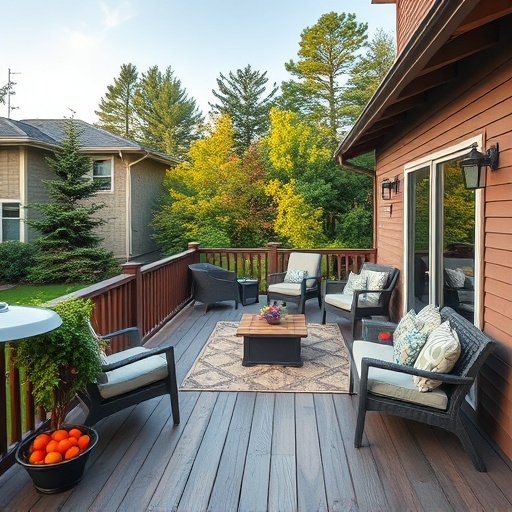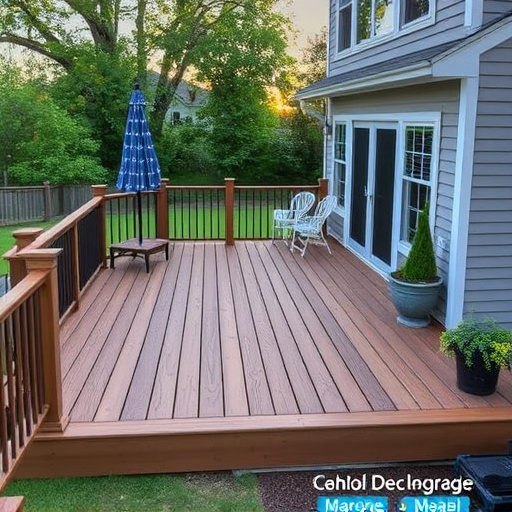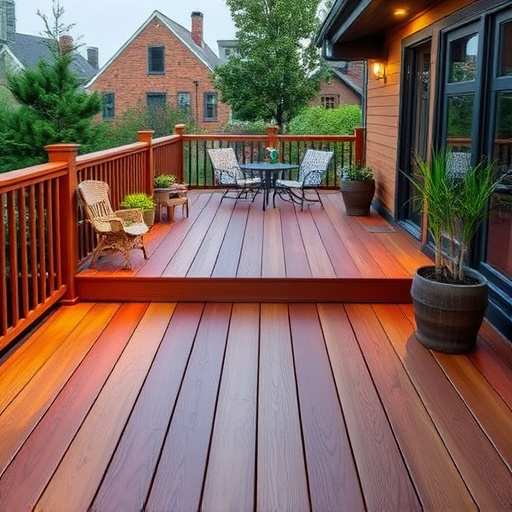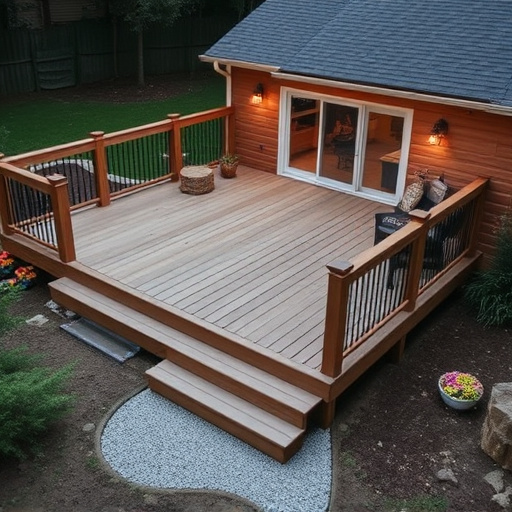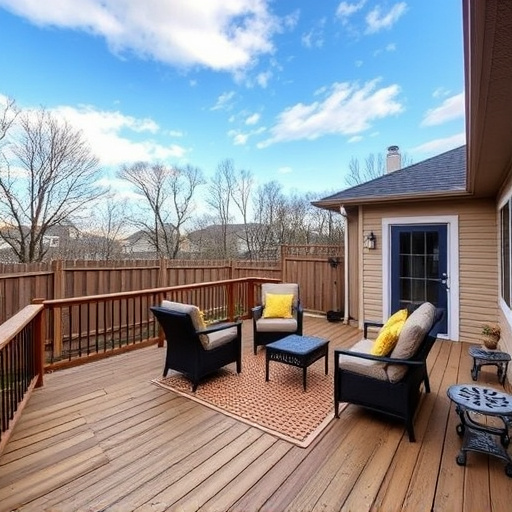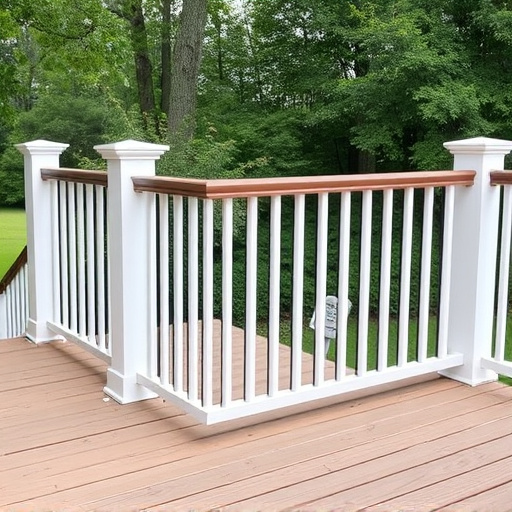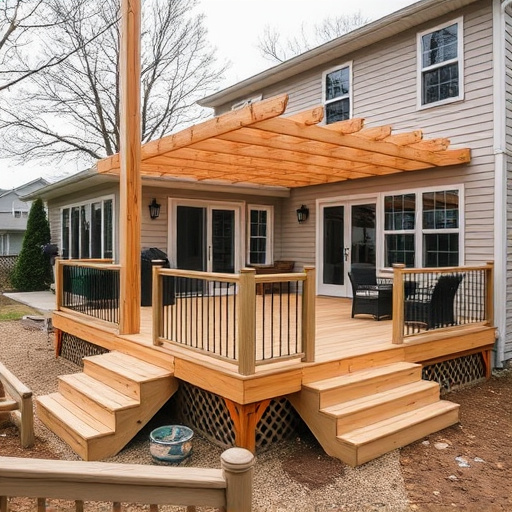Before starting a deck framing project, research local regulations and HOA guidelines. These govern deck size, height, materials (preferably composite or metal), placement, and design features like colors and style. Complying ensures your deck meets zoning criteria, avoids fines, and enhances property aesthetics by harmonizing with existing improvements. Work with professionals who specialize in navigating these rules for optimal deck framing.
Looking to build or upgrade your deck? Navigating deck framing while adhering to Homeowners Association (HOA) and zoning regulations can be a challenge. This comprehensive guide breaks down the essential steps and considerations for ensuring your project complies with local rules. From understanding unique deck framing requirements specific to your area, to designing and constructing a functional yet code-compliant deck, we’ll equip you with the knowledge to succeed.
- Understanding Local Regulations for Deck Framing
- Common HOA and Zoning Requirements for Decks
- Designing and Building a Deck That Complies with Rules
Understanding Local Regulations for Deck Framing

Before beginning any deck framing project, it’s crucial to understand local regulations and building codes that dictate deck construction. These rules vary widely from one community to another, so checking with your local Planning and Zoning department is essential. They can provide specific guidelines on deck size, height, placement, and materials used in deck framing. For instance, some areas have restrictions on wooden decks, encouraging the use of more durable and low-maintenance alternatives like composite decking or metal framing.
Additionally, homeowners’ associations (HOAs) often have rules governing exterior home improvements, including decks. These regulations cover everything from color schemes to structural elements, especially in residential neighborhoods. Commercial roofing and siding repairs are other areas that might intersect with deck framing projects, as they often share similar building codes and safety standards. Staying informed about these local requirements ensures your deck not only meets zoning criteria but also enhances the overall aesthetic of your property, seamlessly integrating with existing exterior home improvements.
Common HOA and Zoning Requirements for Decks
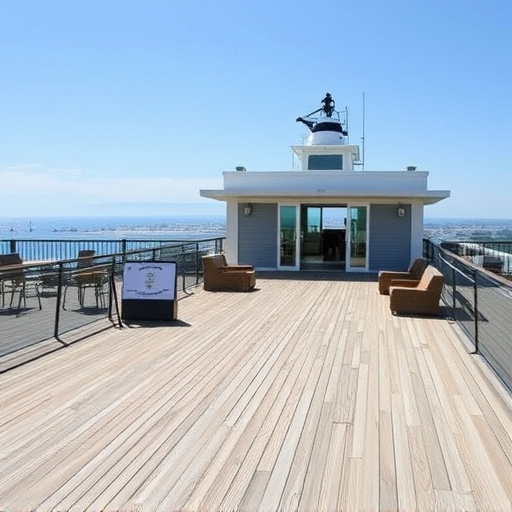
When it comes to installing a deck, homeowners’ associations (HOAs) and local zoning laws play a significant role in dictating what’s permissible. Common HOA requirements for decks often include structural integrity, safety features like guardrails, and adherence to specific design guidelines regarding materials, colors, and style. These rules ensure that the deck complements the surrounding neighborhood and doesn’t pose any hazards or disturbances.
Zoning regulations, on the other hand, control the type and size of structures allowed in a particular area. For decks, this might involve restrictions on height, setbacks from property lines, and even limitations on structural materials, especially in historic districts. Understanding these requirements is crucial when planning deck framing to avoid costly mistakes or potential fines. Professional decking contractors often have experience navigating these regulations, offering tailored roofing solutions and commercial siding options that both meet HOA expectations and adhere to local zoning laws.
Designing and Building a Deck That Complies with Rules

When designing and building a deck, it’s crucial to stay informed about Homeowners Association (HOA) rules and local zoning requirements to avoid any legal issues or structural problems down the line. Start by reviewing your HOA’s guidelines on deck size, height, placement, and materials. These restrictions vary widely between communities, so understanding the specific rules is essential. For instance, some HOAs may mandate a minimum distance from property lines or limit the type of residential siding or roofing solutions used on the deck structure to maintain consistency with the neighbourhood aesthetic.
Next, consult local zoning laws pertaining to building permits and structural integrity. These regulations dictate aspects like load-bearing capacity, stairwell requirements, and even safety features such as guardrails. Proper deck framing is vital to meeting these standards, ensuring your deck is safe and compliant. Consider working with a professional contractor who has experience navigating these rules, especially when dealing with unique site conditions or complex designs. This approach guarantees not only compliance but also a durable and aesthetically pleasing deck that blends seamlessly with your residential siding and gutters.
When designing and building a deck, adhering to local regulations is paramount. By understanding HOA and zoning requirements for decks and incorporating them into your project from the outset, you ensure your deck framing meets all necessary standards. This not only avoids potential fines or legal issues but also results in a functional, safe, and aesthetically pleasing outdoor living space that enhances your property value. Remember, proper deck framing is key to enjoying your investment for years to come.








